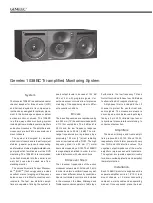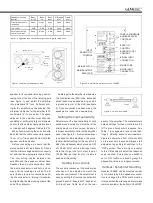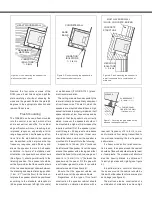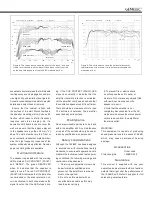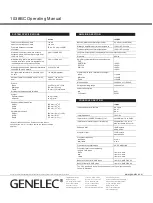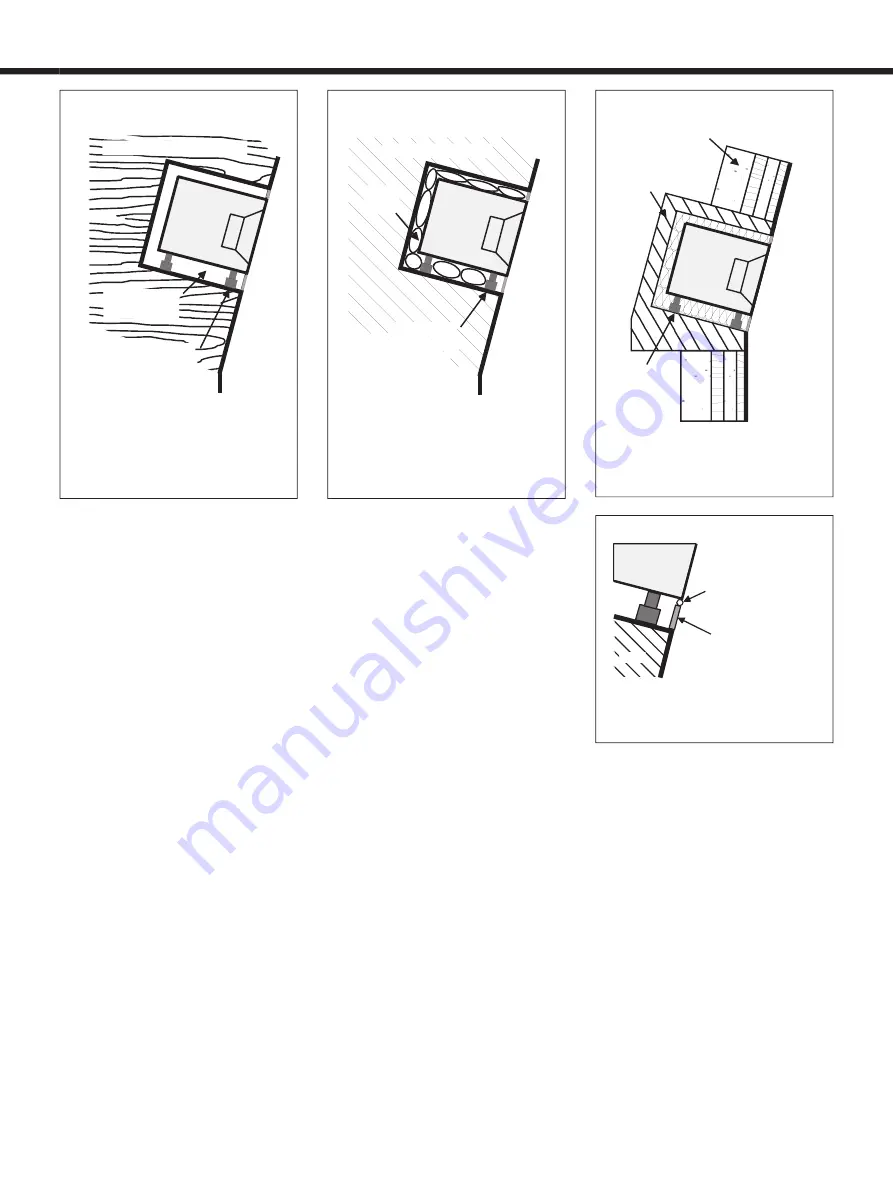
Remove the four cor ner screws of the
DCW (use a 4 mm Allen key) and pull the
plate care ful ly out with out stress ing the
wires and the gas ket. Rotate the plate 90
degrees in the ap pro pri ate di rec tion and
re mount the screws.
Flush mounting
The 1038BC can be used flush mounted
into the control room wall, which offers
some acoustical benefits. No cabinet
edge diffraction will occur, resulting in an
improved response, especially at mid-
range frequencies. Low frequency reflec-
tions from the wall behind the speaker
can be avoided, which improves the low
frequency response and efficiency and
allows the speaker to work in half space
conditions. In terms of installation and
orientation, the speaker’s acoustical axis
(See figure 1) should point directly to the
listening position. The speaker should be
vertically aimed so that the acoustical axis
of the two speakers meet midway between
the standing and seated listening position
(1.4 m - 4’7” from the floor). In the horizon-
tal plane the speaker should be positioned
according to the standard stereophonic
(60 degrees between left-right channels)
Figure 4: Flush mounting the speaker in a
wall constructed of wood
Figure 5: Flush mounting the speaker in a
wall constructed of concrete
Figure 6: Flush mounting the speaker in
a wall constructed of a combination of
materials.
FACING PANEL
FIXED TO THE WALL
(50-100 mm / 2-4")
RUBBER GASKET
(5-10 mm / ¼-½")
SPEAKER
WALL
Figure 7: Covering the gap between the
wall and the speaker cabinet.
or multichannel (ITU-R BS.775-1) place-
ment recommendation.
The ceiling, side walls and especially the
rear wall should be acoustically absorbent
at low frequencies. The wall in which the
speakers are mounted should have a high
acoustical mass to properly implement half
space radiation at low frequencies and be
angled so that the speakers are correctly
aimed. However, the speakers should not
be mounted too high as this increases the
required vertical tilt of the speaker (maxi-
mum tilt angle < 20 degrees) and reduces
the optimum listening area. Great care
should be taken over how the speaker is
mounted into the wall. Note the following:
A space 50 to 100 mm (2 to 4”) wide can
be left around the speaker. Cover the space
around the speaker with a facing panel that
should be fixed to the wall. Leave a gap of
about 5 to 10 mm (¼ to ½”) between the
speaker and the panel. Fill this gap with
a soft rubber gasket to allow for possible
cabinet movement (see figure 6).
Ensure that the speaker cables can
reach the rear of the speaker cabinets.
Regardless of the type of front wall
construction the speaker cabinet should
be mounted on vibration isolators, with a
resonant frequency of 2 to 8 Hz, to pre-
vent vibrations from being transmitted to
the wall and impairing the low frequency
performance.
If a heavy wooden front wall construc-
tion is used, the space around the cabinet
should be filled with absorbent mineral wool
or foam plastic. The wooden wall structure
must be heavily braced to achieve suf-
ficiently high mass and rigidity (see figure
4).
In a solid wall (e.g. concrete) structure,
the space around the cabinet should be
filled with either absorbent mineral wool or
sand bags (see figure 5).
The wall can also be constructed of a
combination of materials to achieve high
CONCRETE
STRUCTURE
VIBRATION
ISOLATORS
f ~ 2-8 Hz
MULTI-LAYERED WALL
(WOOD, CONCRETE, BRICKS)
VIBRATION
ISOLATORS
f ~ 2-8 Hz
CONCRETE WALL
SAND
BAGS
VIBRATION
ISOLATORS
f ~ 2-8 Hz
HEAVY WOODEN WALL
ABSORBING
MATERIAL


